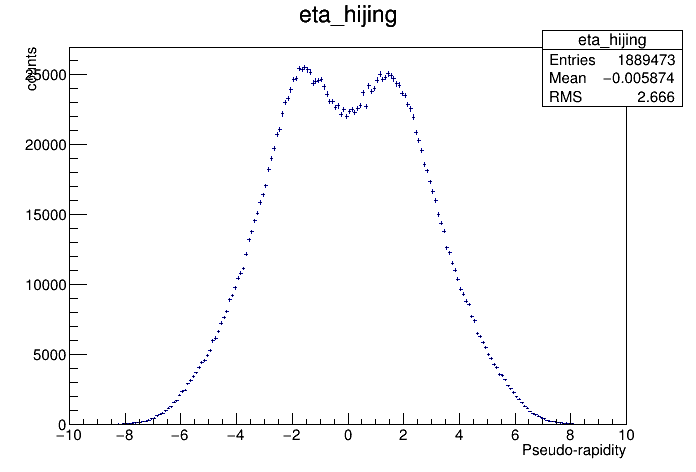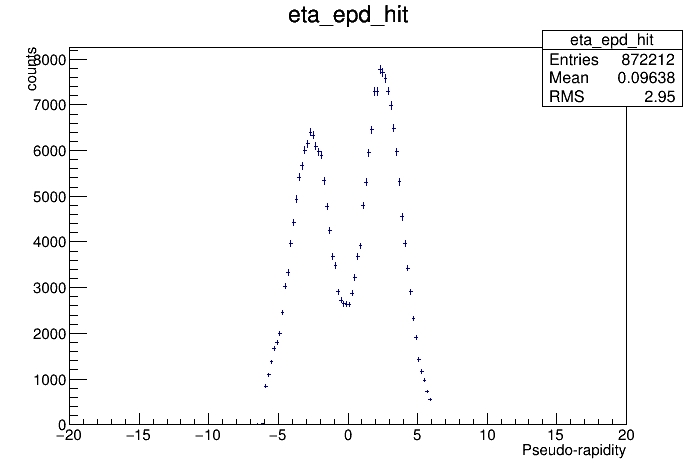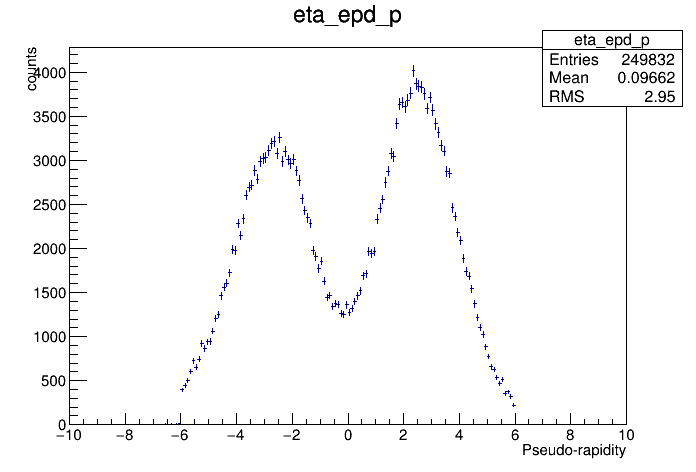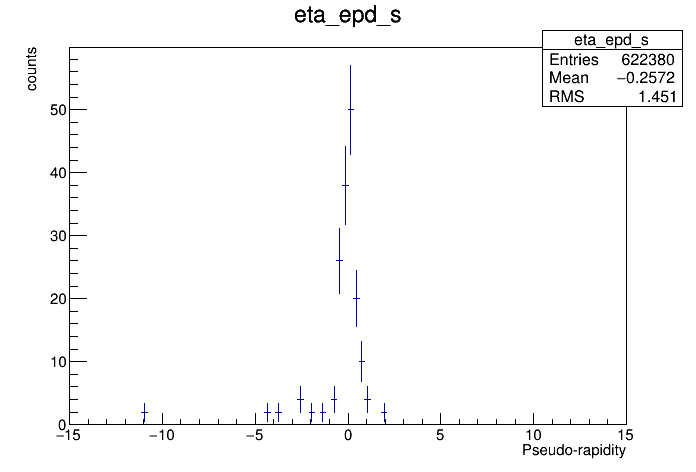EPD hits and Hijing eta distributions
As Mike asked us to check the pseudo rapidity distributions of the particles coming from Hijing, and the ones hitting the EPD, I investigated this problem.
First of all, here is the pseudo rapidity distribution of the Hijing generated particles:


Here we can see the primary (motherless) particles' pseudo rapidity distribution which hit the EPD:


Since in the EPDHijingTree.h header file there is no such thing as eta(pseudo-rapidity) value for the particles coming from Hijing, I calculated it using the following equation:

Moreover, I'm not quite sure how to get the EPD hits' pseudo rapidity, so I did in the following way:
for(int ihit = 0; ihit < T.fEpdHits_; ++ihit)
{
int trackid = T.fEpdHits_fEpdHitTrackId[ihit];
double eta = T.fTracks_fEta[trackid];
...
}
So basically, I iterated through the EPDHits, got the trackid from the EPDHit's TrackId, and investigated the corresponding eta for the trackid.
Summary:
-pseudo rapidity distribution of particles coming from Hijing
-pseudo rapidity distribution of particles hitting the EPD, for both primary(motherless) and secondary(with a mother) particles
-There are ~ 600.000 secondary (with a mother) particles hitting the EPD with a pseudo rapidity equal to -999. It's strange, maybe it's a default value for unknown data?
-Did I calculated the pseudo rapidity in the right way for both the particles coming from Hijing, and for particles hitting the EPD?
- rolandp's blog
- Login or register to post comments
